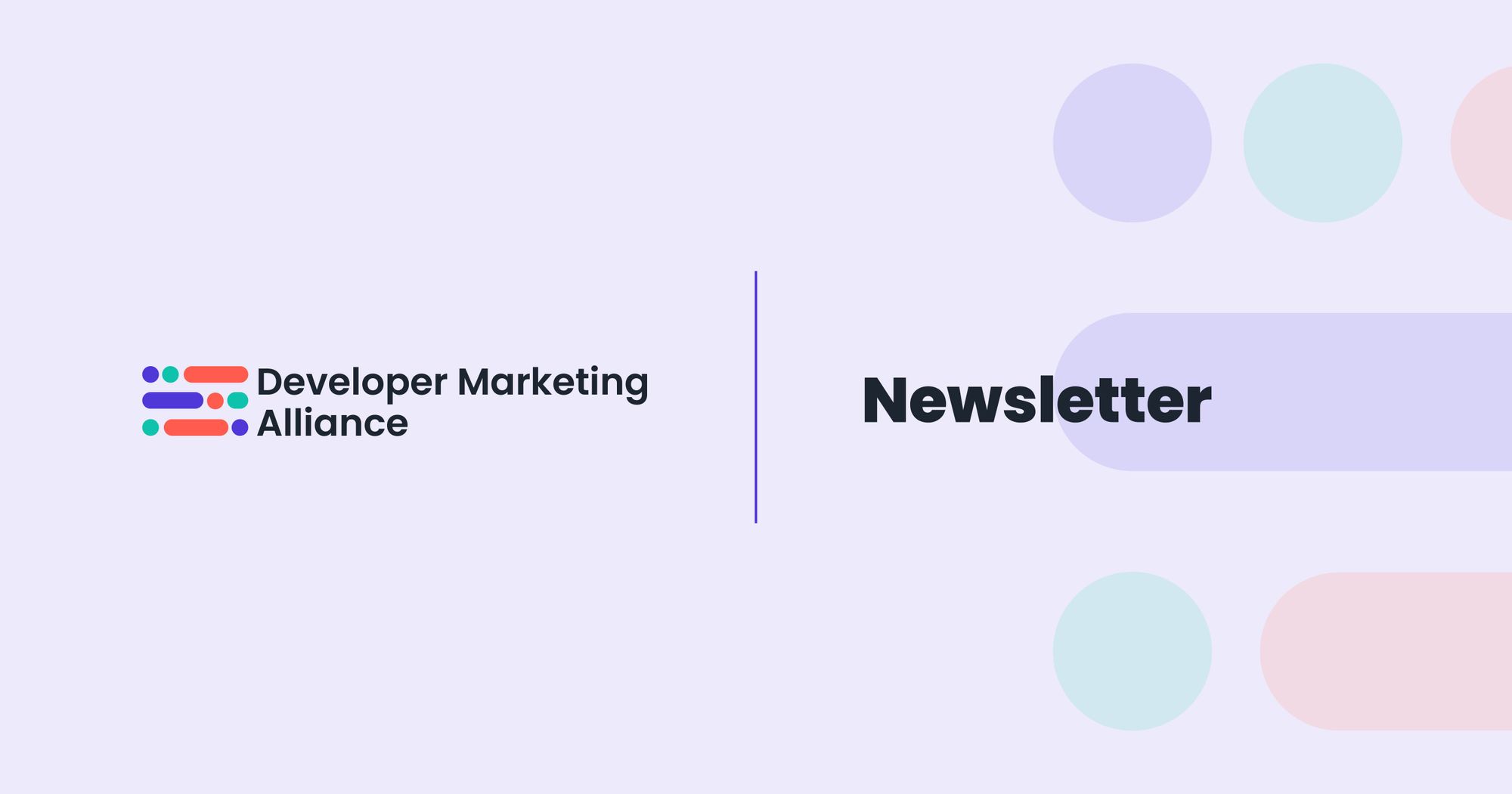Marketing to software developers can be a real chore. But, luckily for us, there’s one crucial step that allows everything else to fall into place: learn to think like a software developer!
Don’t know how to think like a software developer? Don’t worry, you don’t need to go out and get that degree in computer science. The crucial thing to understand is that developers are problem solvers. They are highly analytical folks that are suspicious of frilly marketing speak.
So, messaging your updates to them might seem difficult, but it’s really just a problem to be solved. Or, more appropriately, it’s a code to be cracked. Got that? Good job, you’ve taken the first step to start thinking like a developer! 💪
So, without further delay, here’s a no-frills, all nuts and bolts guide to an effective update strategy.
Main talking points
- When in Rome: effective messaging
- What’s the pain point: marketing to developers
- What’s the benefit?
- Think of the long-term benefits
- Email campaigns: newsletters
- Creating evangelists
When in Rome: effective messaging
Now, here’s a second golden rule: Devs trust other devs, not marketers. Our ultimate goal is to have developers become evangelists for our products and features. But to get to that point, we have to appeal to devs first.
We’ve all heard the expression, “When in Rome, do as the Romans do.” Well, let me extend that analogy to, “When in Rome, speak as the Romans do.” Without that computer science degree, it might be difficult for dev marketers to ever become fluent in developer-speak, but let's imagine we’re tourists for a second.
Everyone knows that when you’re traveling abroad, it helps to have your phrasebook. It helps to have those key phrases that will help you buddy up with the locals.

Well, when notifying devs about a feature update, it helps to exercise precision in your language. Devs will be able to smell marketing-speak a mile off. They’re a highly cynical consumer.
Use concrete, direct language, as in:
- What is it that you're offering?
- What are the software requirements?
- How is it an improvement on what they had before?
- What are the specific bug/glitch fixes?
Developers are prescriptive people. And your messaging, in response, should be prescriptive.
What is the pain point: marketing to developers
Put yourself in the shoes of a consumer. How long do you think a consumer is likely to stare at a message asking them to install a feature update?
Not very long. In fact, in the worst-case scenario, it can be pretty irritating. Updates take time, and during that time, you might not be able to use a piece of software. Even as an end-user, if you only need it for leisure purposes, that can be extremely irritating.
Now, let's imagine you’re a developer and you really need that software for your work. You have obligations, a high workload and a busy schedule. Now imagine how you're likely to react to a feature update that, at best, will take time out of your busy day and, at worst, could be highly disruptive to your workflow.
Imagine, for example, your feature update includes a new UI, which will take time to get used to, but you have an urgent deadline looming.
What is the benefit?
This is why it’s essential that your dev audience feels that the benefit of installing your update will outweigh the inconvenience and disruption. As the title of this article stresses, that is the hook for a developer persona.
Dev consumers are very different from software users in that they’re unlikely to be impressed by bells and whistles, frills and perks. To hook them in, you need to stress the hard benefits. You need to make sure you're familiar with dev consumer pain points and ensure that your messaging addresses them.
For example, developers are often concerned with seamless integration. How well will your release or feature integrate into their tech stack? Even one line in your email or notification that says, for example, “X allows easy integration with Y”, might make all the difference.
Think long term benefits
Now, we’ve already stressed that your busy dev consumer is unlikely to spend a long time crawling through your long message. That’s why this next point is a bit of a risk that might not pay off.
It’s estimated that the average dev needs to be contacted seven times in order to respond to an inquiry or message. For this reason, a punchy, frank message that addresses an immediate quick fix might give you a better chance of response.

Having said that, it might be worth noting that developers are very often not the final decision makers. Any new feature or update will have to be run through different departments in multiple different meetings, sales, marketing, etc.
Just because a dev is sold on a feature doesn’t mean the whole organization will be. Building a narrative that outlines a long-term strategy might impress the higher ups. What is the long-term benefit for the bottom line?
In-app notifications?
According to the developer persona, they tend to be young people, meaning that many of your target audience are going to occupy Gen Z.
Now, according to a recent study conducted by NAPCO and Blucore, 60% of Gen Z used email as their primary means of professional communication. Now, that might suggest that email is still the way to go, but it’s worth noting that this was down from 71% in Gen X and 62% in Millennials.
If the stats keep on trending in that direction, we might be looking at email becoming more and more irrelevant, and in-app notifications becoming the main form of communication.
The young people surveyed mentioned they thought in-app messages seemed more personalized.
Now, imagine your target audience is a young developer who primarily answers professional queries using a software platform; your email inviting them to install a new feature could sit unnoticed in a stack of emails.

Email campaigns: newsletters
The most crucial thing to understand about your target audience is that they’re a niche market. Secondly, they kind of like it that way. Remember how I said that devs were cynical consumers?
Well, Anna Maclean, Strategic Planner at Glasgow-based Stand, has some ideas about how marketers can fight that cynicism.
Essentially, cynical consumers tend to think of themselves as being different, so if they’re in a market, it’s a niche one. Marketers can sometimes fight cynicism by leaning into the niche-ness of their product
“Clever marketing communications campaigns, each of which tackled that potential negativity head-on and acknowledged some consumers’ reluctance to buy that brand, helped those who did feel an affinity with the brand to feel better about themselves and the brand in question.”
Software developers are a tech-savvy type and they are proud of this distinction. 🤓 That’s why they trust other developers. But certain campaigns can emphasize a consumer’s niche in a way that might appeal to them.
Newsletters are a unique form of communication that are not only informative, but also highlight your part in a specific club.
- They're niche.
- They target specific subject matter.
- They also have the potential to be more detailed and informative.
- And they're primarily utilized by email.
While frank, concrete information is still the way to go, it doesn’t mean that a detailed, informative message won’t work with this market.
Creating evangelists
Once again, devs trust devs, so your ultimate goal is to have developers evangelizing your feature or update for other developers. One of the chief problems with developers is that they're pretty scattered. You can’t find them in one place.
Having said that, there are micro-communities of devs to be found in spaces such as Reddit, Quora and Discord. If you can nominate one of your experts to showcase a product or feature walkthrough on a Reddit community, for example, you may just end up encouraging developer confidence.
Getting developers to give feedback can be difficult, but they may be more likely to do this with another developer who is fluent in their language. These communities can be a great way to create, encourage and hear feedback on your product.
And pretty soon you could end up with an army of evangelists in your corner!
Psst.. Want to network with other developer marketers? Join our slack community!





